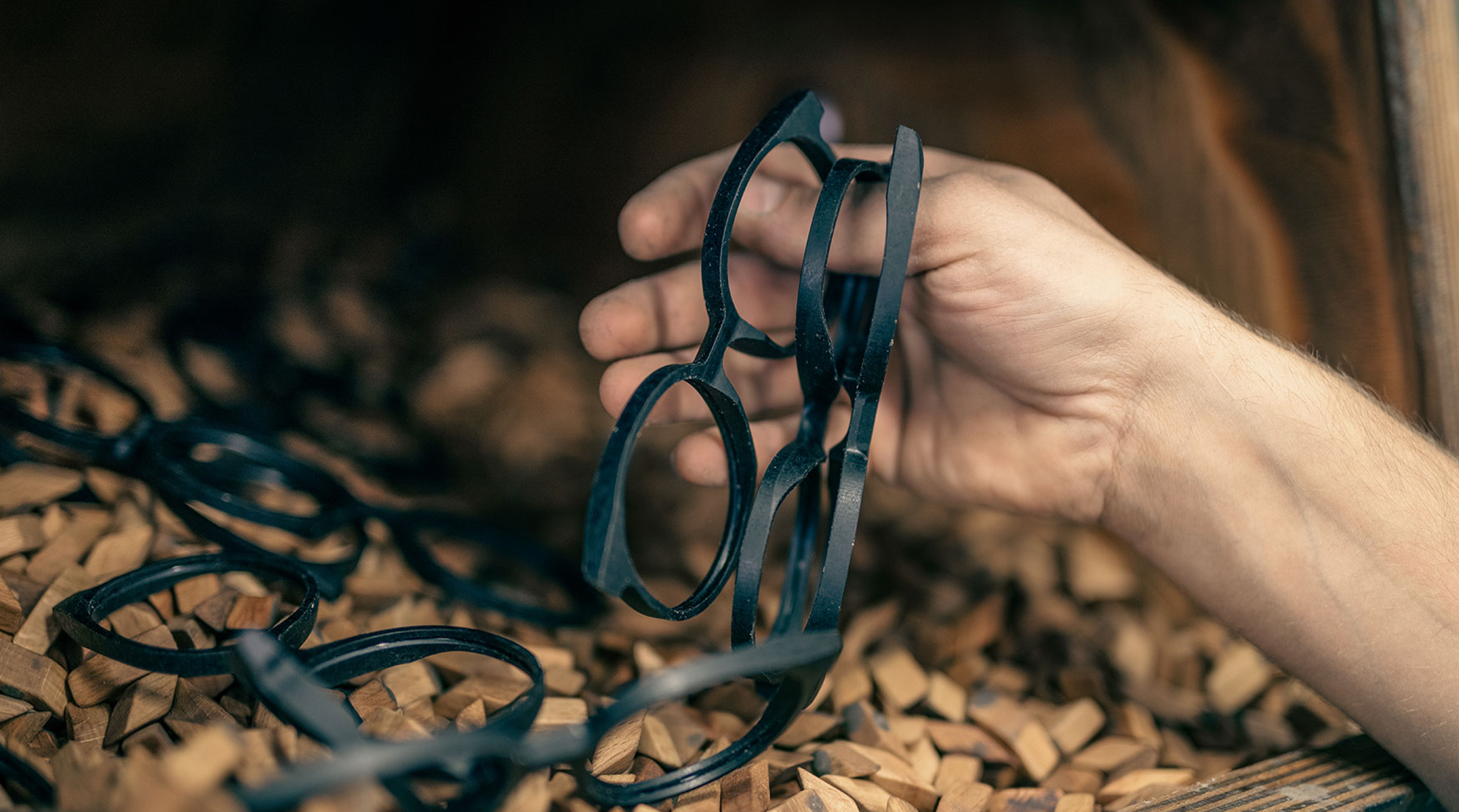
Traditionalists at heart, every Cutler and Gross frame is the result of an unrivalled ability to unify past and present. Ours is a design legacy that spans half a century - and it shows. A marriage of small-scale production and worldwide popularity, our magic stems from the skill to draw inspiration from the vast Cutler and Gross archives, before evolving the frame to suit the faces and lifestyles of a modern audience. Authentic, specific details and sculptural contours are reinterpreted - but never lost. It’s a methodology that guarantees the brand DNA will always remain, regardless of transient trends.

This kind of operation isn’t about speed. For the last 50 years, we have made quality the focus. Production takes place in Italy, at a workshop overshadowed by the Dolomites, in a region renowned for being the centre of optical manufacturing excellence. Bringing heritage to life takes time (months in fact) and involves 42 separate procedures - all of which are guided or completed by experienced hands.
Some of our Cutler and Gross technicians have worked for the company since the 1960s. The mastery of such an intricate process, which they’ve honed over decades, affords them the title of experts in frame-making. Their distinctive techniques are steered by knowledge; it’s a definite, precision-lead operation where the human element is paramount. No two frames of the same style number will ever be 100% identical, but this is the Cutler and Gross way; it gives every pair of glasses a certain unmistakable character.

One of our craftspeople, Amilcare, cutting the acetate on a mill into smaller sized pieces called tablets . These tablets are destined to be frontals or temples of a frame.

Our tumbling machines are packed with a combination of wooden chips, pumice and oil for the first stage of the polishing process. The design of the wooden barrel for the tumbling has been largely unchanged for 100 years.

The Polishing wheel. This is the final part of the 96 hour polishing process for our frames. This application of ‘brilliantura’ wax to the frames ensures the enduring and durable polish for which the Cutler and Gross frames are famous for.
With exposed components, this is honest, understandable design. Perfect, functional simplicity means mistakes have nowhere to hide. The pins holding the hinges are screwed into hand-drilled holes - as opposed to the heat-sinking method of securing the temple which is the speedier option favoured by other brands. Frames are hand-mopped to reveal the colour gradually, not dunked into an acetone bath to ‘varnish’ them. This is no surface treatment. Cutler and Gross build the boldness of shade with layer upon layer of pigment to build up the intensity.
Glossy frames are the result of being tumbled for 24hours in wooden barrels packed with resin chips. This smooths the surface and prepares them for polishing, which is gentle enough to safeguard the clean, defined edges of the frame. Every pair are finished with premium grade lenses because frankly, nothing else will do. Once finished, they’re ready to start the next part of their journey - ready for the moment you pluck them from the Cutler & Gross display and say, “These are the ones for me”

All our frames are meticulously checked by hand by a member of our team at each stage of the production process.
55 Years of Craft
A Journey Through the Atelier
Since our inception in 1969, craftsmanship has been at the core of Cutler and Gross. The kind of craftsmanship that requires generational expertise and a fastidious attention to detail. Craftsmanship that takes time: weeks of fine-tuning, months of developing, years and years of perfecting.
The first Cutler and Gross frames were handmade above our Knightsbridge store in London; this philosophy of personal touch has endured for over half a century. Our glasses are now crafted by expert artisans in our Italian workshop in the foothills of the Dolomites – a region regarded as the centre of optical excellence.
This is the Cutler and Gross way, where the human element is paramount.
Perfect but Never Identical
What defines a Cutler and Gross frame?
It is not simply the unique designs or the statement details. It’s the time-honoured techniques carried out by optical architects who have spent decades honing their skills, requiring a discipline that few possess.
The mastery of such virtuoso work has earned them the title of frame-making experts.
From start to finish, each frame is guided by a series of specialist hands. Cutting, shaping, tumbling, polishing – the glasses come to light over the course of many months. The journey to perfection can’t be rushed.




A Commitment to Craft
Our atelier revolves around honest principles and practices.
Frames are hand-mopped to reveal the colour gradually, adding layer upon layer to create a unique pigment intensity. There is no quick (and temporary) surface treatment. Our signature pins are screwed into hand-drilled holes, as opposed to the speedier and less durable heat-sinking method.
Each frame undergoes a 96-hour polishing process to achieve an unprecedented finish. Wooden barrels packed with resin chips are used to tumble and smooth the surfaces, a process that has been largely unchanged for 100 years.
It is through this journey of meticulous craftsmanship that the frame becomes worthy of the gold-foil moniker inlaid in the temple: ‘Handmade in Italy’. A mark of autonomy and integrity.


The Archive: An Eyewear Odyssey
Our atelier’s expertise is a means to bridge the past with the present. From Elton John’s iconic 70s frames to Julia Robert’s Notting Hill sunglasses and Bono’s wrap-arounds, Cutler and Gross glasses are written in the history books.
And this legacy continues today. Combining extraordinary design, exceptional craftsmanship and a pioneering vision, each collection looks confidently towards the future.


